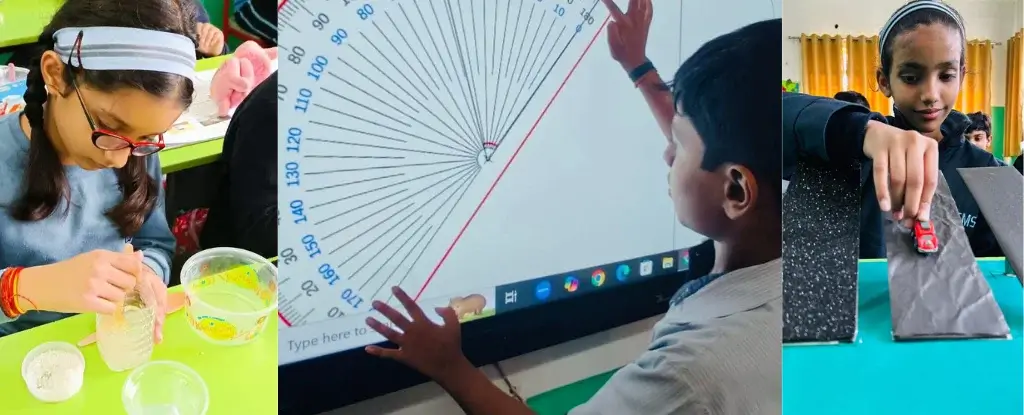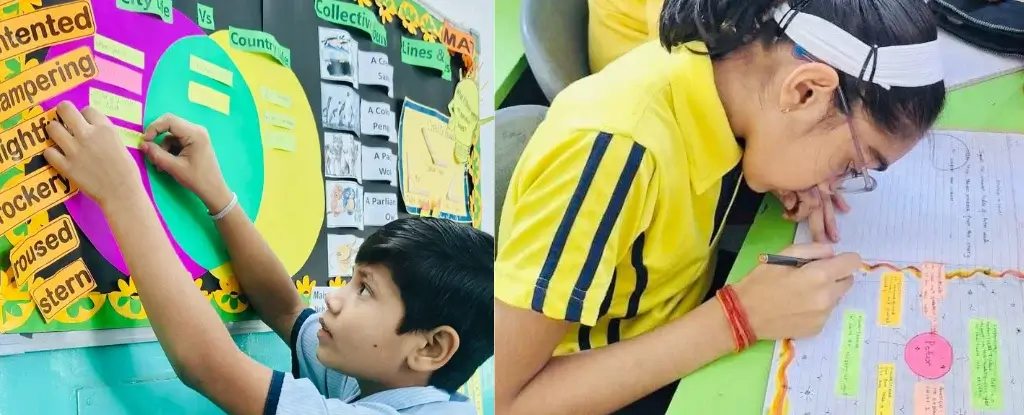Achieving academic success is not just about studying harder; it’s about adopting Smart Study Strategies that make learning more effective and enjoyable. By following proven methods, students can enhance their performance and confidence. At our campus, we emphasize these strategies to empower students to excel. Here are five essential tips for academic success:
1. Plan and Prioritize
Success begins with clear, achievable goals using the SMART framework—Specific, Measurable, Achievable, Relevant, and Time-bound. Pair this with a structured timetable to prioritize subjects based on strengths and weaknesses. These Smart Study Strategies ensure balanced preparation while leaving room for extracurriculars and self-care.
At our campus, students follow a thoughtfully designed routine that helps them stay consistent and focused, giving extra attention to challenging areas. By incorporating strategic planning, we nurture both discipline and flexibility in their study habits.
2. Stay Focused and Recharge
A distraction-free learning environment is vital for implementing Smart Study Strategies effectively. Keeping study areas organized and minimizing screen time boosts concentration. Equally important are regular breaks to recharge the mind, prevent burnout, and sustain focus.
At our campus, distraction-free classrooms and clean setups help students stay engaged. Lessons are structured into 40-minute sessions, ensuring attention remains sharp. Short breaks between sessions allow students to relax and return with renewed energy.
3. Engage in Active Learning
Smart Study Strategies emphasize active engagement over passive reading. Techniques like active recall, the Feynman Technique (teaching others to learn better), and visual tools like mind maps help simplify complex topics and strengthen retention.

Our campus places a strong emphasis on active learning, incorporating a range of effective teaching methods that engage students in the learning process. One of the key strategies we use is Formative Assessments, which are designed to gauge students’ understanding throughout the learning journey rather than just at the end. These assessments help both teachers and students identify areas of strength and areas that need improvement, allowing for timely interventions and personalized feedback. By incorporating these regular checks for understanding, students are encouraged to take ownership of their learning and continuously improve.
In addition to Formative Assessments, we foster an environment of collaborative learning through peer teaching. This approach not only helps reinforce students’ own understanding but also encourages them to communicate their knowledge to others. When students teach their peers, they are required to process and simplify the information, leading to a deeper understanding of the material. Peer teaching promotes teamwork, enhances communication skills, and boosts confidence, as students realize their ability to contribute to the learning of others.
Our use of visual learning tools, such as Frayer Models, further enhances students’ ability to grasp complex concepts. Frayer Models are graphic organizers that help students break down and analyze key concepts by looking at their definitions, characteristics, examples, and non-examples. This method enables students to visualize the relationships between different aspects of a topic, making it easier for them to connect new knowledge to what they already know.
Together, these Smart Study Strategies—Formative Assessments, peer teaching, and visual tools like Frayer Models—encourage students to engage actively with the material, collaborate with peers, and approach their studies in a more thoughtful and reflective manner. These strategies not only help students grasp difficult concepts but also build their confidence in their abilities, setting them up for long-term academic success.
4. Revise and Practice Effectively
Effective revision is a cornerstone of Smart Study Strategies. Using tools like flashcards and solving past exam papers helps students test their understanding, improve time management, and reduce exam-related anxiety.

At our campus, these strategies are reinforced through regular practice sessions and guided reviews. By encouraging students to use targeted revision techniques, we prepare them for academic challenges with confidence and clarity.
5. Emphasize Understanding Over Memorization
Cramming offers only short-term benefits, whereas Smart Study Strategies focus on understanding concepts deeply and applying them in real-life contexts. Hands-on projects, experiments, and experiential learning make concepts memorable and relatable.
At our campus, students engage in project-based learning and lab activities that connect theory with practice. These approaches help them internalize knowledge, building a foundation for lifelong learning and success.
By embracing Smart Study Strategies, students can transform their learning experience. At our campus, we prioritize structure, active learning, and real-world applications, ensuring every learner achieves academic success while
